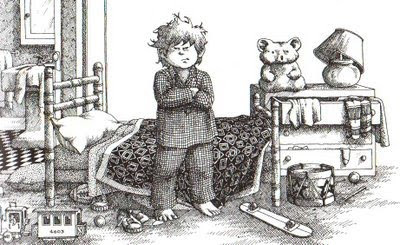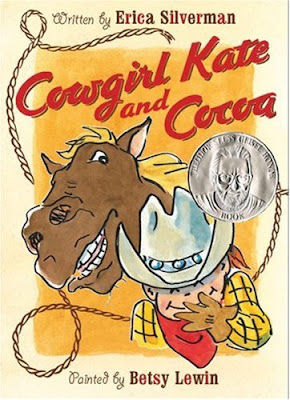
- Bibliography
Taback, Simms. 1999. JOSEPH HAD A LITTLE OVERCOAT. New York: Viking. ISBN 0-670-87855-3
- Summary
Based on a Yiddish folksong, Joseph has an overcoat that becomes worn. As it wears out, it is transformed into smaller and smaller articles of clothing until all that is left is a single button. When Joseph loses the button, he makes a book about the life of the overcoat, ending with the moral – “You can always make something out of nothing.”
- Critical Analysis
Taback uses simple sentences to take readers through the life of Joseph’s overcoat. Parts of the text are repetitive, but not in a way that would cause boredom or loss of interest in the book. The main repetition is in the line, “It got old and worn.” I find that this line, along with the way the story is written could be easily said as a poem or song. The story follows the Yiddish folksong “I Had a Little Overcoat”, which is included at the end of the book. Joseph’s overcoat continues to grow smaller and smaller until he ends up losing the last piece. Just when all seems lost, Joseph decides to write a story about it, teaching the moral that you can always make something out of nothing. 
Taback’s illustrations are formed from water color, Gouache, pencil, ink, and collage. This gives the artwork a very unique feel. The page cut-outs bring a fun aspect to the story and add to the storyline as the overcoat’s original fabric becomes smaller and smaller.
- Awards and Review Excerpts
- AWARDS -
-National Jewish Book Awards, 1999 Winner Illustrated Children’s Book United States
-Randolph Caldecott Medal, 2000 Winner United States
Sydney Taylor Book Awards, 1999 Honor Book Younger Reader United States
- REVIEW EXCERPTS -
BOOKLIST review: “Taback's mixed-media and collage illustrations are alive with warmth, humor, and humanity. Their colors are festive yet controlled, and they are filled with homey clutter, interesting characters, and a million details to bring children back again and again.”
CHILDREN’S LITERATURE review: “Each page is enriched with details appreciated more by adults than children--for example, a newspaper headline reads "Fiddler On Roof Falls Off Roof" or "Chelm Rabbi Knows Why the Ocean is Salty" (It's due to the herring)! Family pictures adorn the walls and peer out of apartment windows, Yiddish newspapers lying on the floor, books with authors such as Sholom Aleichem and I.L. Peretz all vie for attention and inspire adults to share this book with their children and grandchildren.”
- Connections
-Students can write their own story that involves either making something out of nothing or re-writing Joseph’s story using different events.
-Read other books that have missing pieces in the pages such as The Hungry Caterpillar by Eric Carle.
-Connect to science by talking about how Joseph “re-used” his overcoat; discuss other items that could be re-used.










